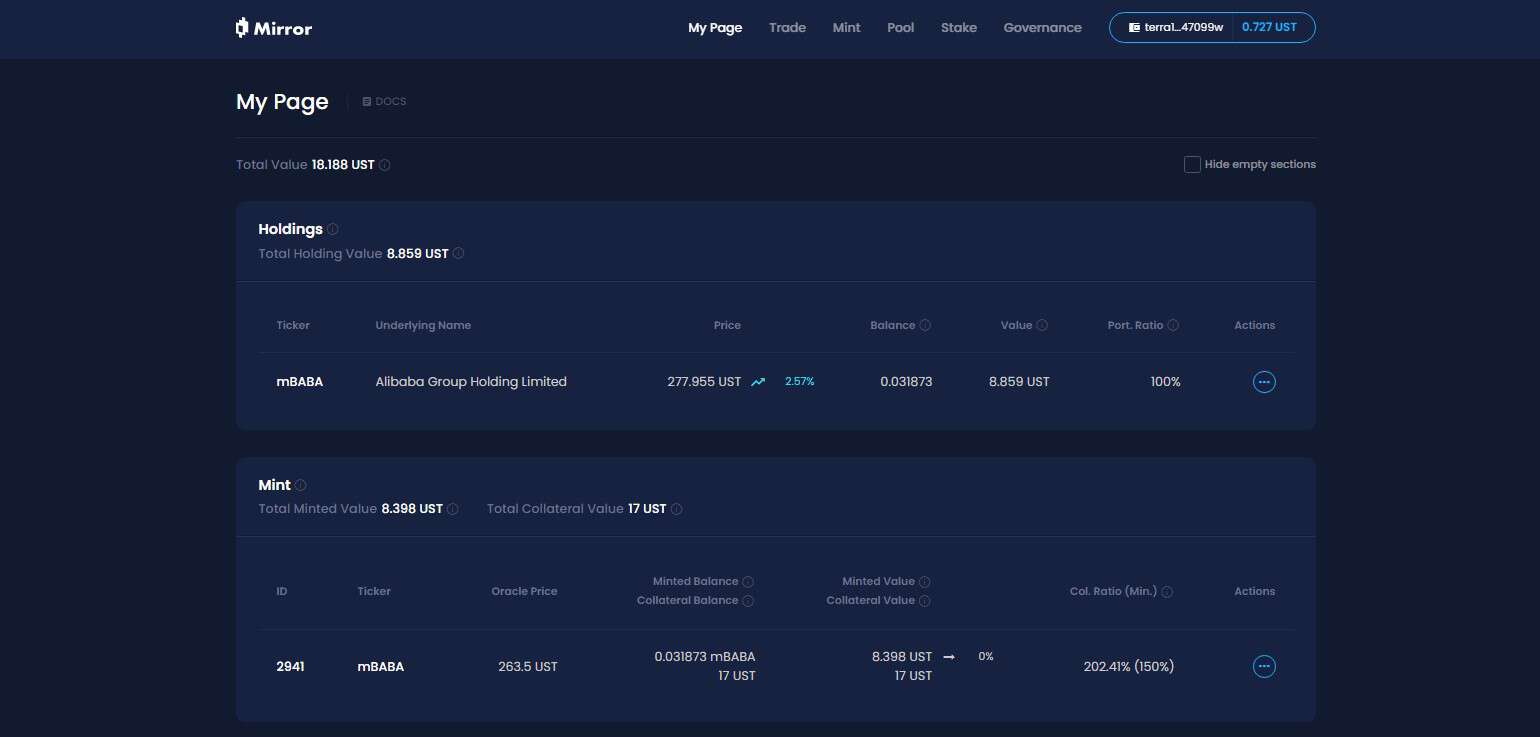The tokenization of U.S. stocks from the perspective of "conspiracy theories", a modest global "dollar harvest"?
Words: Tyler
Have you ever traded U.S. stocks on-chain?
Wake up, Kraken launched xStocks, the first batch of 60 U.S. stock tokens to be traded; Bybit followed suit with the listing of popular stock token pairs such as AAPL, TSLA, NVDA, etc.; Robinhood also announced that it will support U.S. stock trading on the blockchain, and plans to launch its own public chain.
Regardless of whether the tokenization wave is old wine in new bottles, U.S. stocks have indeed become the "new favorite" on the chain overnight.
It's just that when you think about it, this new narrative woven by US dollar stablecoins, US stock tokenization, and on-chain infrastructure seems to be bogging Crypto into a financial narrative and geopolitical game, and inevitably sliding into a new role positioning.
The tokenization of U.S. stocks is not new
The tokenization of U.S. stocks is actually not a new concept.
In the last cycle, representative projects such as Synthetix and Mirror have explored a complete set of on-chain synthetic asset mechanisms, which not only allow users to mint and trade "US stock tokens" such as TSLA and AAPL through overcollateralization (such as SNX and UST), but also cover fiat currencies, indices, gold, crude oil, and almost all tradable assets.
For example, a collateral ratio of 500% means that users can stake $500 of crypto assets (such as SNX, UST) into the system, and then mint synthetic assets (such as mTSLA, sAAPL) that are pegged to the asset price and trade.
Since the entire operation mechanism adopts oracle quotation + on-chain contract matching, all transactions are completed by the internal logic of the protocol, and there is no real counterparty, which also theoretically has a core advantage, that is, it can achieve infinite depth and no slippage liquidity experience.

So why is this synthetic asset model moving towards large-scale adoption?
In the final analysis, price anchoring ≠ asset ownership, and the U.S. stocks minted and traded under the synthetic asset model do not mean that they actually own the ownership of the stock in reality, but only "bet" on the price, once the oracle fails or the collateral asset crashes (Mirror falls on the collapse of UST), the entire system will face the risk of liquidation imbalance, price de-anchoring, and user confidence collapse.
At the same time, a long-term factor that is easy to ignore is that the U.S. stock token under the synthetic asset model is destined to be a niche market in Crypto - funds only flow within the closed loop on the chain, without the participation of institutions or brokers, which means that it will always stay at the level of "shadow assets", which can neither integrate into the traditional financial system and establish real asset access and capital channels, but also few people are willing to launch derivative products based on this, making it difficult to leverage the structural inflow of incremental funds.
So, although they were once popular, they failed to catch fire after all.
The structure of U.S. stock capital drainage under the new structure
And this time, the tokenization of U.S. stocks has changed its play.
Taking the U.S. stock token trading products launched by Kraken, Bybit, and Robinhood as examples, judging from the information disclosed, it is not price anchoring, nor on-chain simulation, but real stock custody, and funds flow into U.S. stocks through brokers.
Objectively speaking, in this model of U.S. stock tokenization, any user only needs to download a crypto wallet and hold stablecoins, and can bypass the account opening threshold and identity review on the DEX anytime and anywhere, and easily buy U.S. stock assets.
From a micro point of view, this is a global user who can buy and sell US stocks more freely, but from a macro perspective, this is actually the US dollar and the US capital market, which is using Crypto, a low-cost, highly elastic, 7×24 channel, to attract global incremental funds - after all, users can only go long under this structure, not short, and there is no leveraged and non-linear income structure (at least for now).

Imagine a scenario where a non-crypto user in Brazil or Argentina suddenly finds that they can buy U.S. stock tokens on-chain or on CEXs, then they can simply download their wallet/exchange, exchange their local assets for USDC, and click a little more to buy AAPL or NVDA.
To put it nicely, it simplifies the user experience, but it is actually a "low-risk, high-certainty" U.S. stock fund drainage structure created for global funds, and the hot money of Crypto users all over the world can use Crypto to flow into the U.S. asset pool with unprecedented low friction and cross-border flow, so that people all over the world can buy U.S. stocks together anytime and anywhere.
Especially when more and more native infrastructure such as L2, exchanges, and wallets are connected to these "U.S. stock trading modules", the relationship between Crypto and the US dollar and NASDAQ will become more secrecy and stable.
From this perspective, the "new/old" narrative around Crypto is being designed as a distributed financial infrastructure designed for U.S. financial services:
-
U.S. Bond Stablecoin → World Currency Liquidity Pool
-
U.S. stock tokenization → NASDAQ's traffic entrance
-
On-chain trading infrastructure → a global transit point for U.S.-funded brokers
This may be a flexible way to siphon global funds, not to mention whether the conspiracy theory is strong or not, at least Trump or later American new storytellers may fall in love with this new narrative of "US stock tokenization".
What should you think about the pros and cons of "U.S. stock tokenization"?
From the perspective of the crypto community, is the tokenization of U.S. stocks attractive, or what impact may it have on the on-chain cycle?
I think we need to look at it dialectically.
For users who lack access to U.S. stock investment, especially crypto natives and retail investors in third-world countries, U.S. stock tokenization is equivalent to opening up an unprecedented low-threshold path, which can be called "asset equality" across barriers.
After all, as a supermarket that has emerged star stocks such as Microsoft, Apple, Tesla, and Nvidia, the "historic long bull" of U.S. stocks has always been talked about by the investment community and is one of the most attractive asset classes in the world, but for the vast majority of ordinary investors, the threshold for participating in transactions and sharing dividends has always been relatively high: account opening, deposit and withdrawal, KYC, regulatory restrictions, and trading time differences...... Various thresholds have dissuaded countless people.
Now, as long as you have a wallet and a few stablecoins, even in Latin America, Southeast Asia, and Africa, you can buy Apple, Nvidia, and Tesla anytime and anywhere, realizing the inclusiveness of US dollar assets at the global user level.
On the other hand, within the crypto circle, especially the transactional users represented by the Chinese-speaking area, the overlap with the U.S. stock investment circle is actually quite high, and most of them already have U.S. stock accounts, and can access the global financial system with one click through overseas brokerages such as banks + IB (I personally use the combination of SafePal/Fiat24 + IB on a daily basis).
For these users, the tokenization of U.S. stocks seems a bit half-baked - they can only go long, there is no derivatives support, and there are not even basic options and securities lending, which is really not transaction-friendly.

As for whether the tokenization of U.S. stocks will further suck the blood of the crypto market, don't be in a hurry to deny it, I think maybe this is a window of opportunity for a new round of "asset Lego" after the DeFi ecosystem clears out inferior assets.
After all, one of the biggest problems of on-chain DeFi is the serious lack of high-quality assets, except for BTC, ETH, and stablecoins, there are not many assets with real value consensus, and a large number of altcoins are of worrying quality and fluctuate violently.
In the future, if these U.S. stock tokens issued under the custody of real shares and issued on the chain can gradually penetrate into the DEX, lending protocols, on-chain options and derivatives systems, they can become new basic assets, supplement the on-chain asset portfolio, and provide more deterministic value raw materials and narrative space for DeFi.
Moreover, the current U.S. stock tokenization products are essentially spot custody + price mapping, without leverage and non-linear income structure, and naturally lack deep financial instrument support, depending on who can make products with strong composability and good liquidity first, and who can provide an integrated on-chain experience of "spot + short + leverage + hedging".
For example, as a high-credit collateral in a lending protocol, a new hedging target in an option protocol, and a composable asset basket in a stablecoin protocol, from this perspective, whoever can take the lead in making an on-chain trading experience that integrates spot + short + leverage + hedging is expected to create the next on-chain Robinhood or on-chain IB.
And for DeFi, this may be the real turning point.
It depends on who can enjoy the dividends of on-chain products from this new wave of narratives.
Write at the end
From 2024 onwards, the question of "whether Crypto can still revolutionize TradFi" is no longer worth discussing.
Especially since the beginning of this year, it has become a core thread of many narratives led by compliant US dollar stablecoins to penetrate the geographical restrictions of traditional financial channels, bypass sovereign barriers, tax barriers, and identity censorship, and finally use Crypto to build a new dollar channel.
Crypto bless America, perhaps, isn't just a joke.
